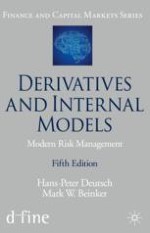2019 | OriginalPaper | Buchkapitel
32. Time Series Modeling
verfasst von : Hans-Peter Deutsch, Mark W. Beinker
Erschienen in: Derivatives and Internal Models
Aktivieren Sie unsere intelligente Suche, um passende Fachinhalte oder Patente zu finden.
Wählen Sie Textabschnitte aus um mit Künstlicher Intelligenz passenden Patente zu finden. powered by
Markieren Sie Textabschnitte, um KI-gestützt weitere passende Inhalte zu finden. powered by
